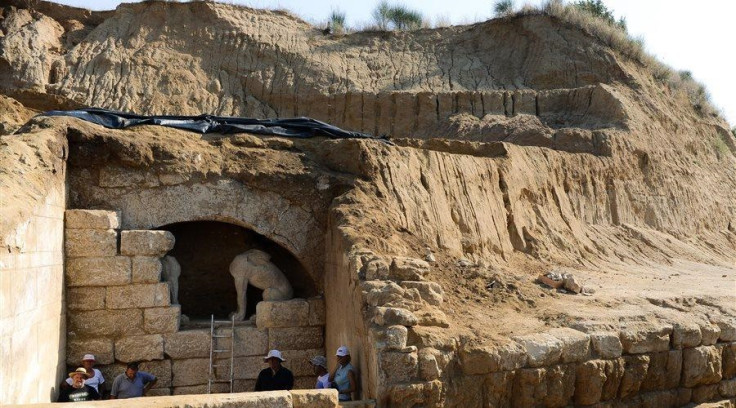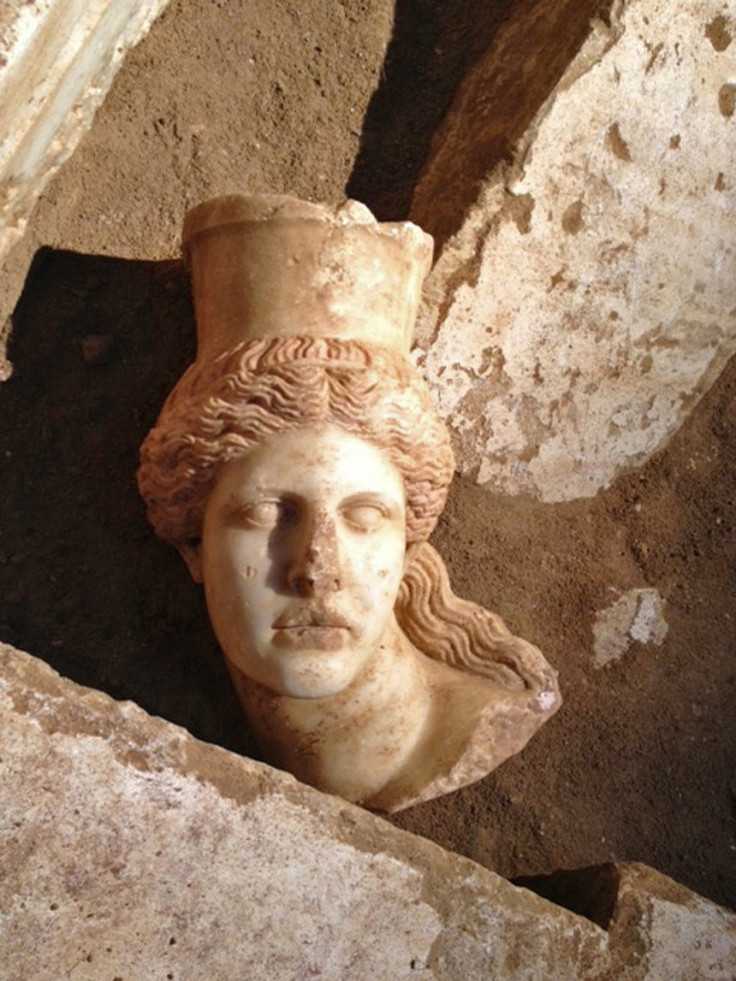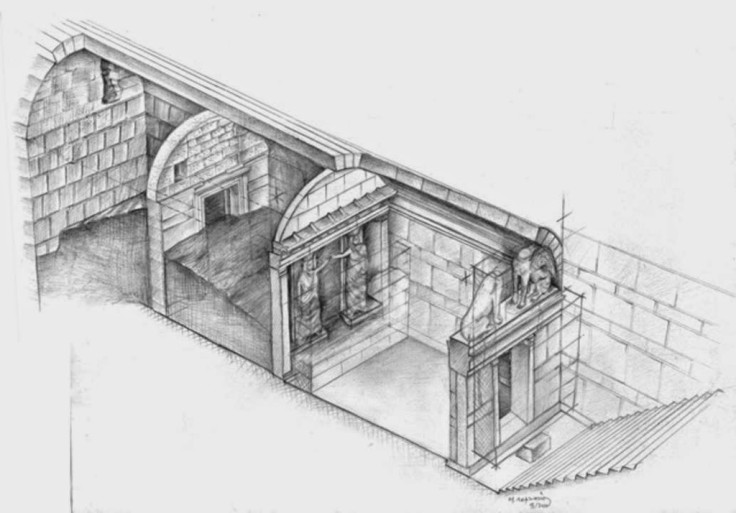Amphipolis: Possible tomb of Alexander the Great 'forgotten' amid Greece's financial crisis

The Amphipolis archaeological site, which might hold the tomb of Alexander the Great, has been forgotten amid the Greek financial crisis. The tomb, which was unearthed within the Kasta Hill in 2012, was dubbed one of Greece's greatest archaeological finds at the time, with experts saying someone of great importance was buried there from 320BC-300 BC – after the death of Alexander the Great.
Since then several important discoveries have been made at the site, including the remains of an elderly woman, two men, a new-born baby and a fifth unidentified person. However, a thorough search of the tomb has still failed to provide any conclusive evidence about their identities.

With the financial crisis, those close to the site have said work has stalled, with no money to continue the work. "No one works here anymore. The project is frozen, like everything else in Greece," a guard told AFP. "We still don't know if the country is going to run out of money."
The Culture Ministry has said time and money will be required to continue the work and make the site accessible to tourists, but funds are yet to be released.
Further controversy also rose after a Greek newspaper suggested the tomb was in fact dated to the first or second century BC, long after Alexander had died. It called the team carrying out the work and their liking the tomb to Alexander the Great a "fiasco".
In response, head archaeologist Katerina Peristeri defended their work. "The tomb complex was built in the final quarter of the fourth century BC (325-300 BC)… was used until Roman times," she said. "The Macedonians sealed it for protection in the second century BC."
Since the discovery of the tomb was announced by the Culture Ministry in 2014, news of the excavation and its discoveries came fast and thick. They included the skeleton of a "hero" found inside a limestone grave buried in the floor of the third chamber: "It is probably the monument of a dead person who became a hero, meaning a mortal who was worshipped by society at that time," a statement said. "The deceased was a prominent person since only this could explain the construction of this unique burial complex."

They also found a missing sphinx head belonging to one of the two marble sphinxes that guard the entrance to the tomb. The missing head was found under collapsed slabs in the third chamber in the tomb.
Amphipolis was an important city of the Macedonian kingdom, ruled by Alexander the Great. During his life, he built an empire that stretched from Greece to India. He died in Babylon at the age of 32 – some believe he was poisoned and others suggesting he had malaria or typhoid fever. His body was laid in a gold sarcophagus filled with honey.
During the funeral cortege to Macedon, it was seized and ended up in Alexandria, where it remained until late antiquity. After this, the fate of the tomb becomes a mystery.
© Copyright IBTimes 2025. All rights reserved.






















